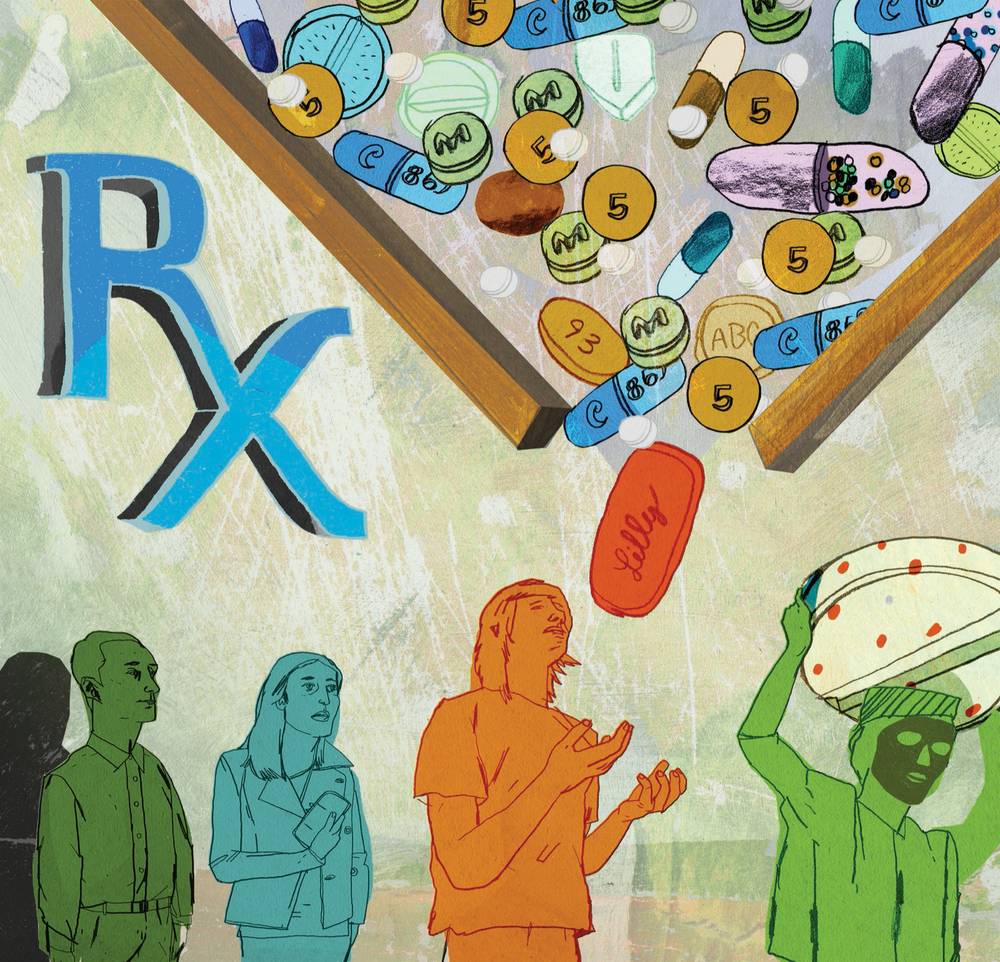Images flash across the screen in the auditorium at Spring Valley High School: Heath Ledger, Jimi Hendrix, Dana Plato, Len Bias, Judy Garland—people who died from prescription-drug overdoses. Nearby, volunteers sit at information tables where students and their parents can find brochures with stats like these: one out of seven U.S. teenagers will take a prescription drug for nonmedical purposes before graduating high school; every day 2,500 U.S. students get high for the first time using prescription drugs; more people in Clark County die of prescription-narcotic overdoses than of illicit-drug overdoses or car accidents each year.
If you’re about to become a pharmacist, those statistics weigh extra-heavy. What’s a pharmacist to do? As the last stop between drug abuser and drug, how much of the pharm-abuse problem is your responsibility? Paul Oesterman, a professor at the University of Southern Nevada’s School of Pharmacy, stands in front of the small crowd at the high school and explains that his college students wanted to take action. “They said, ‘Why can’t we do something to address this problem?’” So while studying the “risks of pharmacy”—one can only imagine the breadth of that chapter—the soon-to-be-pharmacists decided to create this Drug Abuse Awareness Team program to educate, and hopefully dissuade, potential drug-abusers in high school.
Their efforts touch on the larger dilemma that’s being addressed in the Nevada Supreme Court right now, as well as at pharmacies in Las Vegas every day: The role of the pharmacist in this epidemic is vague.
Las Vegas attorney Phil Aurbach argued to the Nevada Supreme Court this month that pharmacists have a duty to intervene when a customer is suspected of abusing prescription drugs. That duty makes them liable not only to the drug user, but also to third parties who may be injured by the drug user. In Sanchez v. Walmart, Aurbach argued that the seven Las Vegas pharmacies that filled prescriptions for Patricia Copening in 2004, after they had received a five-page report from the Nevada Pharmacy Board’s Controlled Substance Task Force about her unusually high narcotic consumption, were liable for the death of a man she hit and killed in a car accident while she was under the influence of those drugs.
More
- From the Archives
- A son lost to the legal kind of drugs (8/14/08)
- Beyond the Weekly
- The painful truth about painkillers (Las Vegas Sun, 7/6/08)
- The deadly toll of painkillers (Las Vegas Sun, 7/7/08)
- Urging action (Las Vegas Sun, 7/8/08)
The pharmacies’ attorney, Michael Wall, said that holding the pharmacists liable would open the floodgates for litigation, and that there is no statutory duty spelled out for pharmacists to stop patients from acquiring drugs prescribed by doctors. Moreover, the pharmacist doesn’t have access to a patient’s medical records and doesn’t know whether they need as much medication as prescribed.
The case, which the high court will weigh in on this spring, is being watched by the pharmacy industry; it puts Nevada again at the head of the pharm-abuse issue. In 2008, a Las Vegas Sun analysis of DEA data concluded that Nevada has the highest per-capita use of hydrocodone in the nation and ranks fourth in per-capita use of methadone, morphine and oxycodone. The state was among the first to create a database to track patients’ narcotic-drug use and make that information available to doctors and pharmacies, in 1997. But the intent of that database—whether collecting and providing information to doctors and pharmacists necessarily implies a duty to act to prevent drug abuse—is in the court’s hands.
Aurbach says the creation of a task force and a tracking database that sends out reports on suspicious patients creates a duty to act. To call the doctor to verify the prescription, or to talk to the patient about his or her use, or even to call law enforcement.
“Look, this is a danger. Why else would you keep a database?” Aurbach says. “And why else would you send out reports on specific patients?”
Larry Pinson, Nevada Pharmacy Board’s executive director, says the task force’s data and reports were created as information only, not as mandates for action.
“[Pharmacists] have the paper with the prescription on it. ... Our law only allows us to refuse for two reasons: One, if it’s a fraudulent prescription; two, if you think it’s going to directly hurt the patient.” Pinson suggests pharmacists counsel the patient and refer them to recovery clinics if they suspect abuse. But, he says, the pharmacist simply doesn’t have the legal right to withhold a prescription based on a hunch or an ethical concern that second-guesses the prescribing doctor.
Pharmacy Board General Counsel Carolyn Cramer explains: “There isn’t an affirmative duty [for the pharmacist to investigate or reject the prescription]. This opens a whole can of worms from 10 years ago, the morning-after pill. Pharmacists shouldn’t second-guess the doctor. If they’ve got a valid prescription, they’re obligated to fill it.” The so-called morning-after pill was opposed by pharmacists who believed it constituted an abortion in a pill; courts and lawmakers have addressed the issue differently state by state. In 2005, Nevada lawmakers decided not to allow pharmacists to opt out of dispensing it.
Pinson says, “If you have tentative conscience because of religion or other reasons, that’s not acceptable. The law now is specific: There are two reasons.” Still, the work of the task force doesn’t happen in a vacuum. The data on patients’ use is available to pharmacists and doctors and is combed for signs of problems. Initially the task force set parameters for what would prompt them to send alerts about individuals like Copening. “We set what we thought was acceptable use of some drug, X number, but we found out that our bar was way, way out of whack. There were way more people using way more narcotics than we could conceive,” Pinson says. “But we’re not in the pain-management world.”
And that’s key to the problem. Patients with cancer or other conditions may require a lot of medication, which makes it difficult to tell the abusers from those who are truly in need. And the set-up pits pharmacists as watchdogs over doctors, even though pharmacists don’t have access to medical records.
“Pain is subjective,” says Las Vegas pharmacist Lori Otale. “That’s a gray area. Generally pain-management doctors are careful.” But, she says, others “just want the patient to get out of their face. ... I’ve even had a doctor call me and say, ‘I prescribed it, but don’t fill it‚’ because they wanted me to be the heavy.”
So now, Pinson says, when perusing the database, if someone’s narcotic use catches the task force’s attention in some way, “We send a report to every physician and pharmacy that has written them prescriptions. We make them aware. That’s it.
“There’s no hard and fast rule what [pharmacists] are supposed to do,” Pinson says. “It’s a touchy situation. But somewhere in all of this process you have to rely on professional judgment of your professionals.”
And that, says Otale, is exactly what it boils down to: a doctor’s, and a pharmacist’s, professionalism. While the pharmacist delivers the drugs, it’s the doctor who initially should consult the database to be sure the patient isn’t getting narcotics from other doctors.
“It’s more of a judgment call,” says Otale, who has been a pharmacist in Vegas since 1990.
“The task force has no legislative teeth,” she says. She’s called many doctors about their prescriptions, and consulted with many patients when their request sets off red flags. For example, she said, some pill-seekers will ask what color or brand of a narcotic she dispenses, which the non-abusing patient is unlikely to care about.
One thing is certain, Otale says. “The problem is growing. It’s definitely growing.”








Previous Discussion: